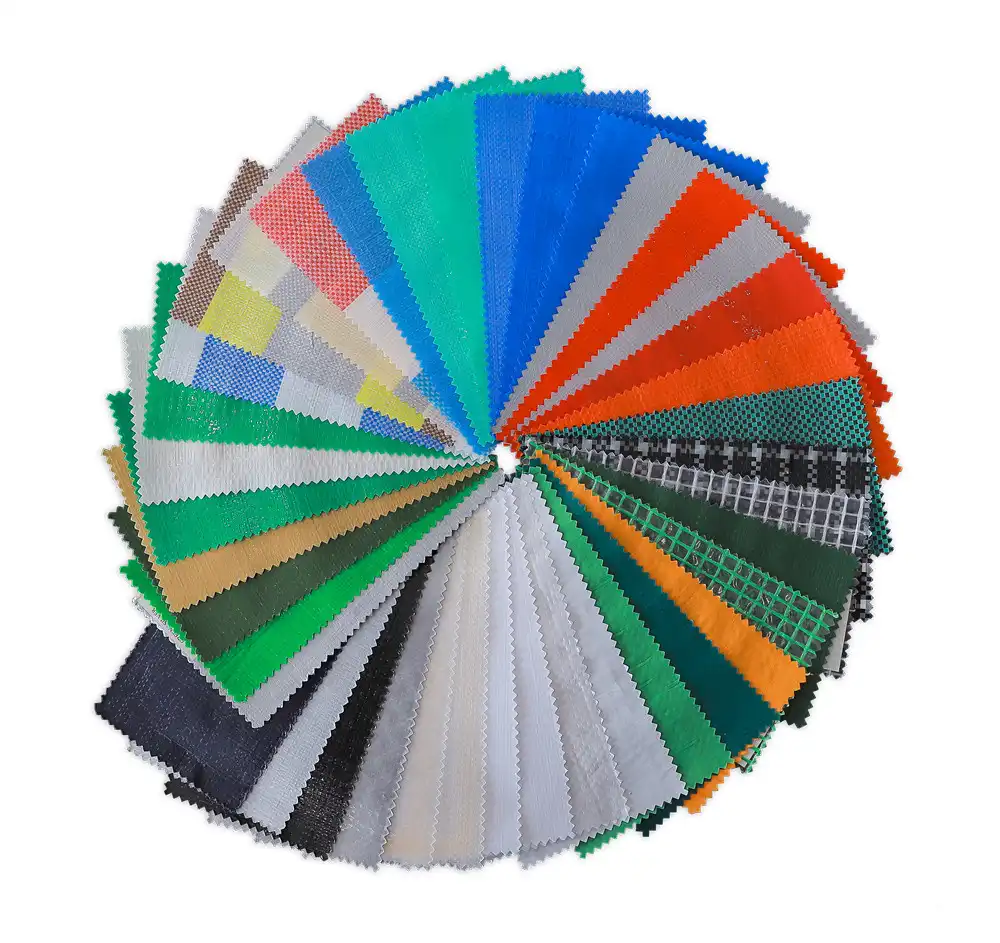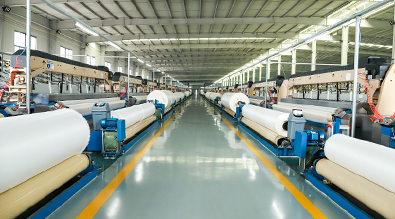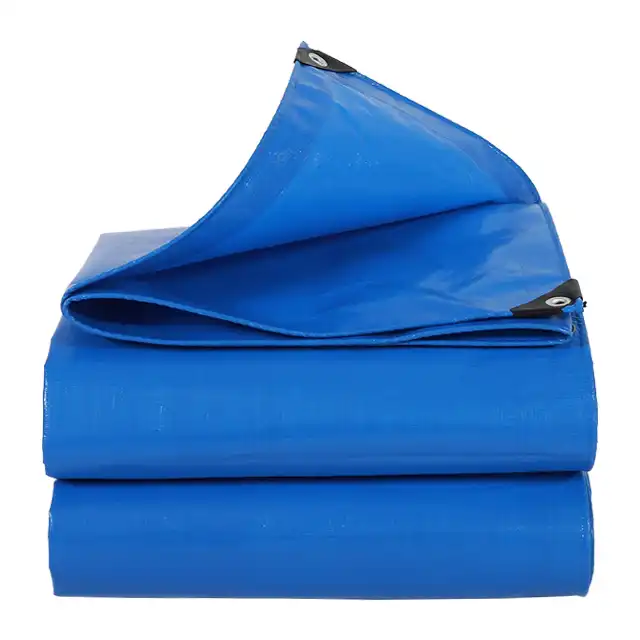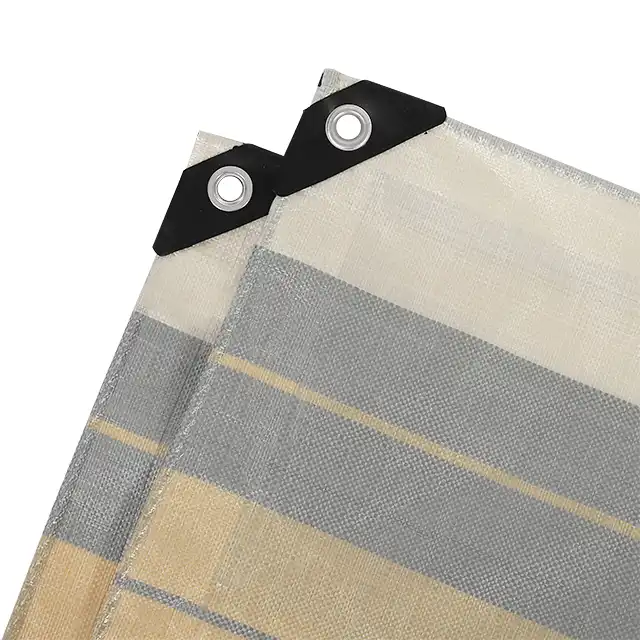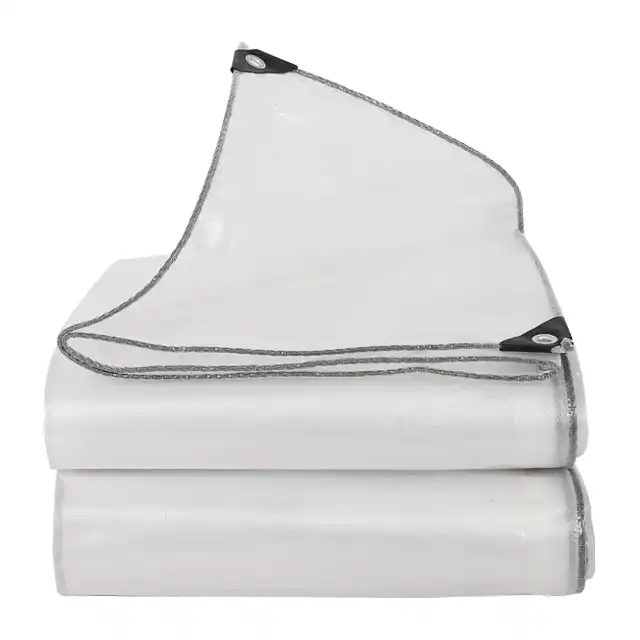How to Clean a Tarpaulin Without Damaging It?
Proper tarpaulin maintenance is essential for extending the lifespan of your protective covers and ensuring they continue to provide reliable service. Whether you're dealing with heavy-duty polyethylene tarps, canvas covers, or specialized PVC-coated materials, understanding the correct cleaning procedures can prevent premature deterioration and costly replacements. A well-maintained tarpaulin not only performs better but also maintains its waterproof properties, UV resistance, and structural integrity for years to come. To clean a tarpaulin without damaging it, use mild soap or detergent with soft-bristled brushes, avoiding abrasive materials that could compromise the protective coating. The key to successful tarpaulin cleaning lies in gentle handling, appropriate cleaning agents, and thorough drying processes. Professional-grade tarps, such as those manufactured with high-density polyethylene fibers and LDPE coating, require specific care protocols to preserve their waterproof membranes and UV-resistant properties. Understanding your tarpaulin's material composition helps determine the most effective cleaning approach while avoiding methods that could cause cracking, tearing, or coating degradation.
Essential Pre-Cleaning Preparation for Tarpaulin Maintenance
Identifying Your Tarpaulin Material and Construction
 Before initiating any cleaning procedure, proper identification of your tarpaulin's construction materials is crucial for selecting appropriate cleaning methods. Modern heavy-duty tarps are typically constructed from high-density polyethylene (HDPE) woven fabric with low-density polyethylene (LDPE) coating, creating a durable, waterproof barrier. Understanding whether your tarpaulin features additional treatments such as UV stabilizers, fire-retardant coatings, or antimicrobial finishes helps prevent cleaning methods that might compromise these specialized properties. Professional manufacturers like those producing 100-280gsm weight tarps often incorporate multiple protective layers that require gentle cleaning approaches to maintain their effectiveness. The mesh count, typically ranging from 10x10 to 14x14, indicates the fabric's density and influences cleaning pressure requirements. Thickness measurements between 7-12 mil also affect cleaning protocols, as thinner materials require more delicate handling to prevent punctures or tears during the cleaning process.
Before initiating any cleaning procedure, proper identification of your tarpaulin's construction materials is crucial for selecting appropriate cleaning methods. Modern heavy-duty tarps are typically constructed from high-density polyethylene (HDPE) woven fabric with low-density polyethylene (LDPE) coating, creating a durable, waterproof barrier. Understanding whether your tarpaulin features additional treatments such as UV stabilizers, fire-retardant coatings, or antimicrobial finishes helps prevent cleaning methods that might compromise these specialized properties. Professional manufacturers like those producing 100-280gsm weight tarps often incorporate multiple protective layers that require gentle cleaning approaches to maintain their effectiveness. The mesh count, typically ranging from 10x10 to 14x14, indicates the fabric's density and influences cleaning pressure requirements. Thickness measurements between 7-12 mil also affect cleaning protocols, as thinner materials require more delicate handling to prevent punctures or tears during the cleaning process.
Gathering Appropriate Cleaning Equipment and Materials
Proper preparation involves assembling essential cleaning items including soft-bristle brushes, mild soap or detergent, and appropriate cleaning tools. Professional tarpaulin cleaning requires specific equipment designed to remove contaminants without damaging the protective coating or underlying fabric structure. Soft-bristled brushes with synthetic fibers work effectively for removing surface debris while preventing scratches that could compromise waterproof barriers. Microfiber cloths and non-abrasive sponges provide additional cleaning options for delicate areas or specialized coatings. Water temperature selection plays a critical role, as excessive heat can soften LDPE coatings and cause permanent deformation. Room temperature or slightly warm water typically provides optimal cleaning effectiveness without risking material damage. Professional-grade cleaning solutions should be pH-neutral and free from harsh chemicals, solvents, or bleaching agents that could degrade polyethylene fibers or strip protective treatments applied during manufacturing processes.
Workspace Preparation and Safety Considerations
Creating an appropriate cleaning environment ensures both effective cleaning results and material protection during the maintenance process. Placing the tarp on a clean, flat surface while removing rocks or objects that might damage it prevents punctures and tears during cleaning. Large tarps require adequate space for full deployment, allowing access to all areas without excessive folding or bunching that could trap contaminants or create cleaning blind spots. Ground preparation involves clearing debris, ensuring proper drainage to prevent water accumulation, and providing adequate ventilation for drying processes. Safety considerations include wearing appropriate personal protective equipment, particularly when handling cleaning chemicals or working with large, potentially unwieldy tarps. Proper lifting techniques and assistance from additional personnel prevent injuries and reduce the risk of accidentally damaging the tarpaulin through improper handling. Environmental factors such as wind conditions, temperature, and humidity levels affect both cleaning effectiveness and drying times, requiring consideration in timing and technique selection.
Step-by-Step Cleaning Techniques for Different Tarpaulin Types
Polyethylene Tarpaulin Cleaning Methods
Polyethylene tarps, particularly those constructed with HDPE woven fabric and LDPE coating, require specialized cleaning approaches that preserve their waterproof properties while effectively removing contaminants. The initial cleaning phase involves thorough debris removal using gentle brushing techniques that won't compromise the protective coating. First spray water on the tarp to remove dirt or debris, then let it sit for 5-10 minutes to allow contaminants to soften. This pre-treatment phase helps loosen embedded particles and reduces the mechanical force required during subsequent cleaning steps. Professional-grade PE tarpaulins with weights ranging from 100-180gsm demonstrate excellent durability when cleaned using appropriate methods, maintaining their tear resistance and UV protection capabilities. The cleaning solution should consist of mild, biodegradable detergents mixed with water at concentrations recommended by the manufacturer. Scrubbing motions should follow the weave pattern when possible, reducing stress on individual fibers while maximizing cleaning effectiveness across the entire surface area.
Heavy-Duty Canvas and Vinyl Tarpaulin Care
Canvas and vinyl tarpaulins present unique cleaning challenges due to their different material compositions and construction methods compared to polyethylene alternatives. Mild dish soap works effectively on the grime and dirt that collects on heavy-duty poly and vinyl tarpaulins, providing gentle yet thorough cleaning action. Canvas tarps, often featuring natural fiber construction, require careful moisture management to prevent mold, mildew, or dimensional changes that could affect fit and function. Vinyl-coated materials benefit from specialized cleaning agents designed for synthetic surfaces, maintaining flexibility while removing accumulated contaminants. The cleaning process for these materials typically involves sectional cleaning approaches, working in manageable areas to ensure consistent results across the entire tarpaulin surface. Pressure washing techniques can be effective for heavily soiled tarps, but pressure settings must be adjusted according to material thickness and coating type to prevent damage. Post-cleaning treatment with appropriate protectants helps maintain water repellency and UV resistance, extending service life significantly beyond standard cleaning-only maintenance schedules.
Specialized Cleaning for Coated and Treated Tarpaulins
Modern tarpaulins often feature specialized coatings and treatments that provide enhanced performance characteristics but require modified cleaning protocols to maintain their effectiveness. PVC tarpaulins are protected from cracking and abrasion through the use of soft bristles and sponges with light pressure and water with mild soap. Fire-retardant treatments, antimicrobial coatings, and enhanced UV stabilizers can be compromised by aggressive cleaning methods or inappropriate chemical exposure. Understanding these specialized treatments helps determine suitable cleaning agents and techniques that preserve functionality while achieving thorough contamination removal. Biodegradable degreasers specifically formulated for coated materials provide effective cleaning power without compromising specialized treatments. The cleaning sequence for treated tarpaulins typically involves initial water rinsing, gentle detergent application, systematic scrubbing with soft implements, thorough rinsing, and controlled drying processes. Quality control during cleaning involves regular inspection for coating integrity, checking for signs of delamination or treatment degradation that might indicate cleaning method adjustments or material replacement needs.
Proper Drying and Storage Practices for Tarpaulin Longevity
Effective Drying Techniques and Timeline Management
Proper drying procedures are critical for preventing mold, mildew, and material degradation that can significantly reduce tarpaulin service life and performance capabilities. The most important aspect of tarp maintenance is never folding it up when wet, as both synthetic and canvas tarps must be absolutely bone dry. Professional drying techniques involve complete surface water removal, adequate air circulation, and sufficient time for moisture evaporation from both surface and embedded areas. Hanging systems that allow full tarp deployment provide optimal drying conditions, enabling air circulation around all surfaces while preventing water accumulation in folds or creases. Temperature and humidity conditions significantly affect drying times, with lower humidity and moderate temperatures providing ideal conditions for efficient moisture removal. Forced air circulation using fans or blowers can accelerate drying processes, particularly in enclosed spaces or during adverse weather conditions. Quality assessment during drying involves checking for complete moisture removal, particularly in seam areas, reinforced sections, and thick material zones where water retention is most likely to occur.
Storage Environment Optimization
Creating optimal storage conditions extends tarpaulin service life while maintaining performance characteristics between use cycles. Storage environments should feature controlled temperature and humidity levels, adequate ventilation, protection from direct sunlight, and pest exclusion measures. Temperature fluctuations can cause expansion and contraction cycles that stress material bonds and coatings, making stable temperature control beneficial for long-term material integrity. Humidity control prevents mold and mildew growth while reducing the risk of material degradation associated with excessive moisture exposure. Proper storage positioning involves avoiding sharp folds that could create permanent creases or stress concentration points leading to premature failure. Rolling storage methods distribute stress more evenly across material surfaces, reducing the likelihood of crack initiation or propagation during storage periods. Professional storage facilities often utilize climate control systems that maintain optimal conditions year-round, providing superior material preservation compared to typical outdoor or uncontrolled indoor storage environments.
Preventive Maintenance Scheduling and Inspection Protocols
Establishing regular maintenance schedules ensures consistent tarpaulin performance while identifying potential issues before they develop into costly problems requiring premature replacement. Professional maintenance programs typically include periodic cleaning cycles, comprehensive inspections, minor repair procedures, and preventive treatments designed to extend service life. Inspection protocols should cover material integrity assessment, coating condition evaluation, seam strength testing, and hardware functionality verification. Documentation of maintenance activities provides valuable data for optimizing cleaning schedules, identifying recurring issues, and planning replacement cycles based on actual performance rather than arbitrary timelines. Quality manufacturers often provide maintenance guidelines specific to their products, incorporating material-specific recommendations that optimize cleaning effectiveness while preserving warranty coverage. Regular maintenance scheduling also enables proactive replacement planning, ensuring backup equipment availability and preventing operational disruptions caused by unexpected tarpaulin failures during critical use periods.
Conclusion
Effective tarpaulin cleaning requires understanding material composition, using appropriate techniques, and maintaining proper care protocols to preserve performance and extend service life. Professional cleaning approaches protect specialized coatings, treatments, and structural integrity while removing contaminants that could compromise waterproof properties or cause premature deterioration. Regular maintenance scheduling, combined with proper storage practices, ensures consistent performance and maximizes return on investment for quality tarpaulin products.
When selecting high-quality tarpaulins for your applications, consider partnering with established manufacturers who understand the importance of material durability and maintenance requirements. Linyi Shengde Plastic Co., Ltd., a leading China Tarpaulin factory with over 20 years of manufacturing excellence, offers comprehensive solutions for customers seeking reliable China Tarpaulin supplier relationships. As a trusted China Tarpaulin manufacturer, we provide China Tarpaulin wholesale options featuring superior quality construction, competitive Tarpaulin price structures, and extensive customization capabilities. Our High Quality Tarpaulin products, available as Tarpaulin for sale, incorporate advanced manufacturing technologies and rigorous quality control processes that ensure exceptional performance and longevity. For detailed product specifications, customization options, or procurement inquiries, contact our experienced team at info@shengdetarp.com to discover how our proven expertise can meet your specific tarpaulin requirements.
References
1. "Heavy-Duty Tarpaulin Cleaning and Maintenance Guidelines" - Industrial Fabric Association International - Professional maintenance standards for commercial tarpaulin applications.
2. "Polyethylene Material Care and Preservation Techniques" - American Society for Testing and Materials - Technical specifications for PE tarpaulin cleaning procedures.
3. "Waterproof Coating Preservation in Outdoor Fabrics" - Textile Research Institute - Scientific analysis of cleaning effects on protective coatings.
4. "Commercial Tarpaulin Lifecycle Management" - International Association of Canvas Products - Industry best practices for tarpaulin maintenance and storage.
